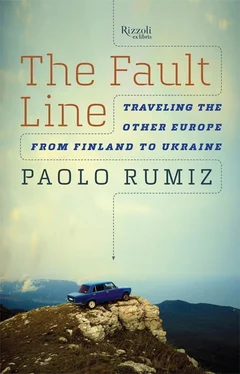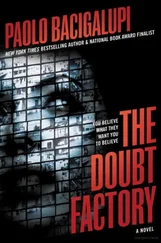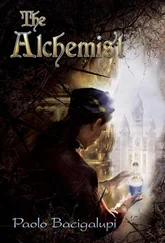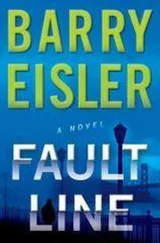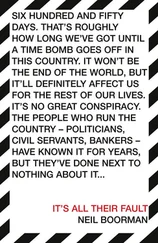“Alexander, Pavel, Andrei, Nikolai, Mikhail, Vassily.”
Now Herman calls upon all the saints, makes mysterious signs in the air, immerges a gold cross in a basin, launches into the litany. Nadyezhda and her friend Larissa respond in chorus. The men, bearded and speckled with wood chips, genuflect, get back up, repeat the theatrical Russian sign of the cross, and slowly it appears that the boat is moving away from the shore and that the czar in person is sailing with us toward a brightly lit sea. At the end, Herman sprinkles us with a sort of brush dipped in holy water. But it’s not a blessing; it’s a shower, and I’m soaked down to my belt.
We finish celebrating around a table with steaming hot tea and pastries—pirogi—made with a berry called groshinka , saturated with the aroma of fir trees. The monks and shipwrights have the faces of whalers. They tell us that the monastery was founded four centuries ago by a monk whose name was also Herman. Then it was a Gulag, and after the Gulag an army base. Finally the new Herman came and began restoring the chapel in order to have the minimal necessary space to say Mass. Since then, there has been a procession of monks and volunteers who year by year have restored the churches, the dormitories, the museum, the printing shop. A lot of the new tenants on the Solovetskys are people who come from far away and decide to spend a part of their lives here, as a vow.
“Throw away that cane,” the hegumen (abbot) with the long ashen-gray hair exhorts me as he bids me farewell. “You can make it on your own.” I promise him I’ll do it at the earliest opportunity. “Come back,” Nadyezhda urges us, “this is a sacred place,” and she tells us of the sunlit nights, or better, a special thing that in Russian is called the “white silence,” and of God who inhabits the Solovetskys. The prisoners who came here were not afraid, because they could feel this spiritual energy. “Here, the prisoners had more hope than in the other concentration camps of the North.” By now the little ship of Peter the Great has brought us together, taken us to the symbolic heart of the Karelian epic: the boat that is run ashore and transported from lake to lake, the same one that in the times of the Vikings sailed up the rivers of the Balkans and down the other side of the peninsula all the way to the gilded domes of Kiev. We are all a people of voyagers.
At six in the evening a mustard yellow light descends over the islands to exalt every wrinkle in the terrain. The weather is magnificent, and even the launch Tuman , the rust bucket that’s supposed to take us back to the mainland from a crooked wooden dock out of Mark Twain’s Old Times on the Mississippi , is shining like a goldsmith’s display case. Onboard, another extraordinary court of miracles has already gathered: a small woman with Tartar cheekbones and boots; a guy with wild eyes and a silvery scalp, carrying a riding crop; a blond with reindeer gloves and a blouse wide open in the sun; a bearlike man dressed in camouflage togs who looks as though he just got back from Chechnya; and an old Scottish woman, wizened as a dried cod.
At the stern, there’s a kitchen with doors and windows that open out on the sea, and a fish soup on the fire. Amidships, two windowed sitting rooms with a bench on the inside perimeter, which obliges everyone to face one another and talk. But get a load of the crew: an entire family. The maxi-size mother rules over the kitchen and cleans the salted cod on the side of the ship, using water from the lake. The father smokes behind the helm. The older children go up and down, to and from the engine room. The youngest—Losha, thirteen—helps out everywhere he can. He’s a tough and sweet boy who is already a sort of vice head of the family. Hang in there, old Tuman ; when they replace you with a hovercraft, all of this magic will go with you.
The departure is a wheezing, gasping cough, a delightful throat-clearing of rust and salt, with a trailing skein of seagulls and, towed behind us, a frothing bulk-loaded pontoon pulled by a steel cable. Water and sky have again changed color together. The water blue, like a large river, the sky blue, puffed out like a jib in the north wind. At the stern, the distant kremlin shines white on the island bristling with pine trees. On the port side, three large dolphins, white as the Holy Spirit, act as our escorts. They’re called byuna (“pallid ones”), and an excited young girl shouts out their name, leaning forward into the wind like a figurehead.
But when the fish soup is done to a T and the aroma has stoked everybody’s appetite, right then we hear another shout. I don’t understand what it means; all I can see is the guy in the camouflage togs pointing his binoculars into the sun back toward the islands, already vanished below the horizon. Now all the passengers are looking in the same direction and shouting the same name.
“A sea lion!”
I see him too now, his presence marked by some overhead sea swallows; the birds form a turbine around the school of fish that he’s preying on. He looks like a big white dolphin, a little mountain of snow that emerges and disappears.
“There are two of them!”
“No, three!”
I see them; there are also some babies. The white hump of the leviathan glistens in the blue.
Wind, excitement. I open my map of Vertikalnaya Europa, spread it out on the deck of the bow to determine our position. The map is eight feet long and a foot and a half wide, and a small crowd gathers to see it. They recognize their world, rediscover their places, and add new ones. So right there in the middle of the White Sea, we’re deluged with the advice and suggestions of the pilgrims to the Solovetskys. “Go to Kizhi, on Lake Onega; it’s a forest of wooden domes. Go when there’s a full moon; go to hear the morning prayers.” Another almost cries out, “The island of Valaam!” and as he names it, he crosses himself three times, so great is his reverence for the place. He points to it on the map, in the middle of Lake Ladoga, with its monastery. But already another hand, a pale feminine hand, is searching farther down, and a finger points to Novgorod. The woman asks me for my pen and adds a note in Cyrillic on my map. Another revered place of Russian orthodoxy.
But it’s not over yet. The gorilla in camouflage reveals that he’s Ukrainian. He bends over the map, stretches his mug toward the Carpathians, and says, “Pochayiv, the holiest of churches, where the pilgrims arrive on foot and stay overnight in the church.” Outposts of the faith that have somehow survived the Stalinist repression, territories on the frontier that Monika has been exploring for twenty years. I realize that the map could be much longer. Passing by Mount Athos, it could go all the way to the rock-hewn churches of Cappadocia, the crib of Christianity, where half a century ago Islam stifled the sound of the last church bell. In my mind’s eye, I see again the labyrinths of rocks and torrents, hear the roosters again, calling each other from valley to valley, see a ray of moonlight thrust like a sword into a hermit’s cave on the side of a mountain. And then, even farther down, next to Bethlehem, I can see the Greco-Palestinian monastery of Saint Saba, solitary and fortified, at the top of a gorge, sandwiched between Jews and Muslims. At the foot of its walls, an immovable custodian refused entrance to Monika because she was a woman.
Everything starts to come together. From this vertical journey, it emerges quite clearly that Catholicism and Protestantism are living in their safety zones behind the front lines. The faith on the front lines is Eastern Orthodoxy. The hand-to-hand conflict with totalitarianism and rival monotheistic religions is not the stuff of priests, popes, and cardinals, but of solitary patriarchs, archimandrites, and hegumens like Herman, forgotten by Europe in their turreted outposts of the faith. I can see again the patriarch of Istanbul, in his office under the portrait of Mustafa Kemal Atatürk, whispering words of coexistence while from the Bosporus to Hagia Sophia, the cry of the muezzin annihilated all other sounds for the vespers prayer. An acoustic competition with no hope of victory.
Читать дальше
